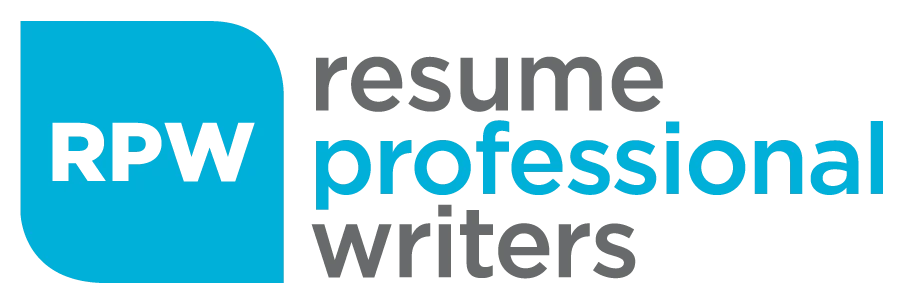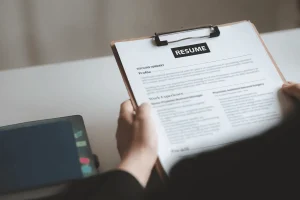Many businesses require job candidates to submit a resume before being considered for a position. They examine resumes to see if the candidates’ education, experience, and skills fulfill company requirements. Thus, when writing a resume, you want to grab the attention of a potential employer without inflating any facts. If you don’t have enough experience to list, you can add externship on resume.
A useful and meaningful externship may set you apart from other job hopefuls in today’s competitive employment market. This is especially true if you’re a student or recent graduate with limited job experience, or if you’re switching fields. Your externship experiences should not be hidden at the bottom of your resume depending on your resume format. Instead, emphasize your externship experiences and how they have prepared you for the position you desire.
What is an Externship?
Externships are designed to provide students with unique experience and exposure to a profession, company, or sector. According to Eller College of Management, Externships are usually shorter than internships, spanning from a day to around eight weeks, which is why many students opt to complete one over winter or spring breaks. Because the chance is usually brief, students are not required to undertake much work and are consequently underpaid.
Should You Put an Externship on Resume?
Did you know that there are benefits to putting externship on resume? You’ll be able to better visualize yourself in that field while also soaking up an important segment of career-focused knowledge by going out of the classroom and into a genuine working atmosphere. Therefore, your resume should include both internships and externships. Externships, like internships, are a means for companies to see your first-hand experience in the industry and help you further your career.
Here are some more advantages of adding externship on resume.
When to Add Your Externship on Resume
This depends on the target job. For example, when applying to the same company or institution where you performed your externship, mention it. Aside from that, there are just two instances in which it should be included. To begin, see if your externship position and duties match the job description. Second, if you have minimal job experience, include it.
Put the specifics of your externship under the work experience or externships section. List the information in your resume after you have a clearer knowledge of your tasks and the abilities that you’ve acquired. If you have minimal job experience to show, list your externship in the work experience area.
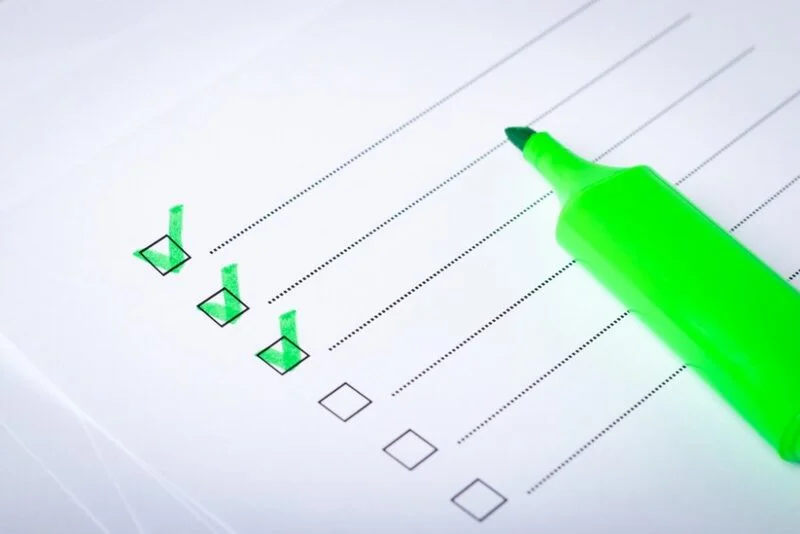
How to List an Externship on Your Resume
When mentioning job experience, you should include your company; the start and end dates of each employment; as well as your position, responsibilities, and accomplishments. The same approach is used to list an externship experience. If you have had several relevant externships and want to add them all, they may be included either in the ‘Professional Experience’ area or under their own ‘Externship’ section.
You can create a distinct section under the professional development section as ‘Externships’ if you have a considerable quantity of work experience and believe your externship is still relevant to the position you’re seeking for. You can also label the section ‘externships and internships’ if you have internship experiences to include.
Take note: Concentrate on duties that are relevant to the position you’re looking for. You don’t have to list your less important tasks.
How to Format Your Externship on Resume?
Writing an externship on resume is quite stressful. Let’s be honest here: There’s a lot riding on just one small piece of paper. The perfect externship may help you begin your career by teaching you industry-specific skills while also extending your professional network.
Qualifications Profile
The first section is your summary statement, which is a two- or three-line description of your qualifications and experience. Some students omit the summary statement to create room on their resume for other crucial information. Summary statements are preferred since they concentrate on the employer’s demands.
Sample: Astute and detail-oriented software developer with hands-on experience in coding the software for updates and enhancements, testing the software, and interacting with other software developers toward project completion.
Work Experience
List the job title you held during your externship on resume. If you don’t know what your work title is, ask your previous supervisor or just mention the job title of the person you shadowed and add the word ‘externship’ after it. Following your work title, provide the name of the firm where you did your externship, followed by the date. When mentioning your role as an extern in a particular company, make sure to specify what kind of extern you were.
Work Experience
Company Name | Start Date-End Date
Medical Assistant Extern
It saves space on your resume by allowing the recruiter to get a sense of what tasks were involved in your job and how you fit in the business without having to list everything in the bullet points.
Job Duties
When explaining your jobs and responsibilities, it is critical to include specifics. This offers the recruiter a better idea of what responsibilities you’ve done before and how they connect to what they want from you based on their job description. After you’ve listed your externship tasks, show the transferrable skills you obtained and the accomplishments you made in that short period of time.
Use easy-to-skim bullet point sentences to assist clarify your duties and successes while filling out your information for each job experience. Each bullet point should begin with a strong action verb.
Related Article:
Knowing How Many Bullet Points per Job on Resume: The Ideal for Your Job Search Goals
Areas of Expertise
In the skills section, provide any soft skills you obtained from your externship. Before everything else, you must be able to show yourself as a qualified job seeker on your resume. Assess your current position in your job and identify areas where you thrive. If you learned any skills from this experience that are applicable to the job you’re seeking for, you may include skills in a variety of parts of your resume.
Additional Sections
Additional information on resume should be tailored to the position you’re looking for so that it seems relevant and intriguing to an interviewer. Here are some other types of information to put on your resume:
- Certifications and licenses
- Training or continuing education
- Special awards or commendations
- Publications
- Charity or volunteer work
Example of Externship on Resume
The length of your externship resume should not exceed one page. Keep it brief and sweet, please. This forces you to be concise and efficient with your words. Furthermore, most job managers only glance at your resume for seconds. Unless the first page is really intriguing, they are unlikely to bother with the second. Here’s a sample to have an idea on what to write:
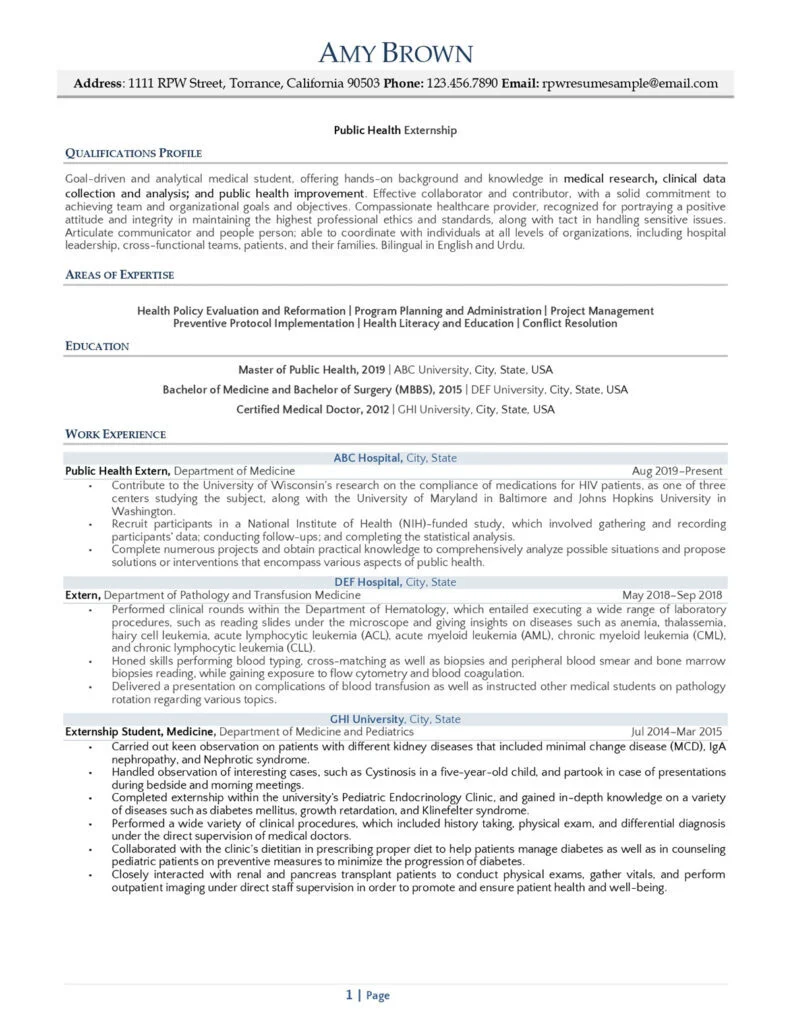
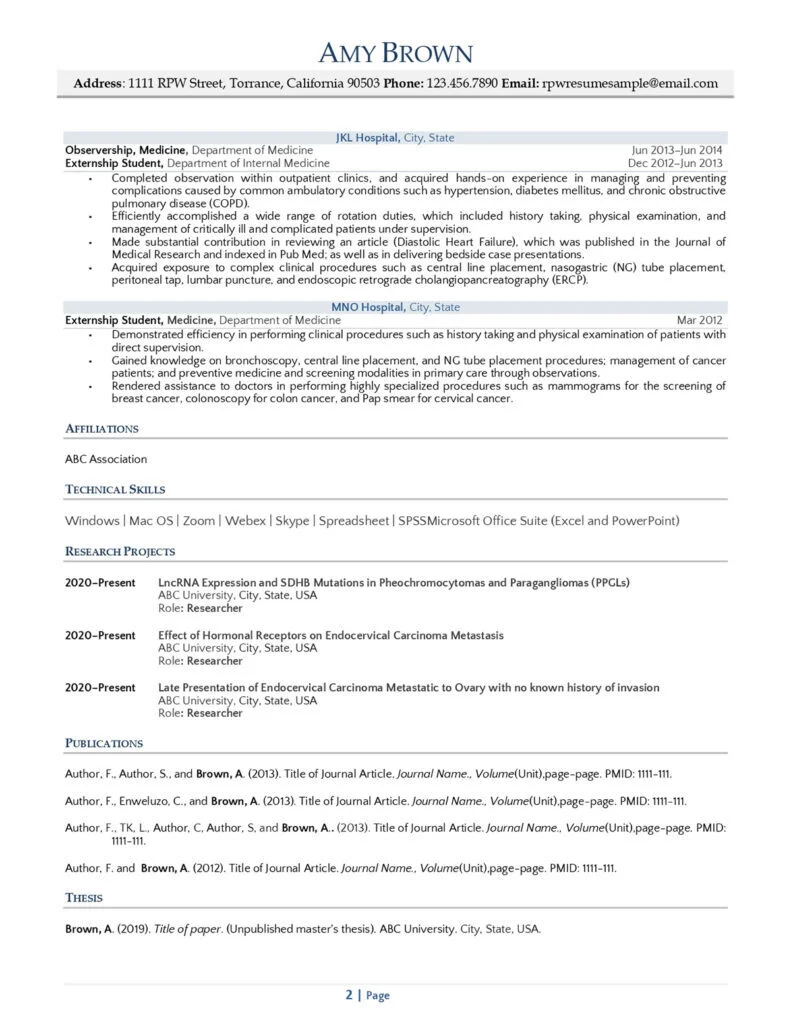
Final Recommendations
1. Remember to include a cover letter.
Yes, cover letters are important. When mailing a cover letter, use the correct business letter structure. Include your contact details, the date, and the employer’s contact information at the top. Make a formal greeting and sign your name at the bottom of the page. If you’re submitting the cover letter by email, be sure it’s formatted correctly.
Check out our complete advice on how to create an externship cover letter, and use it to show off your personal and professional tone on your letter.
2. References should be removed.
These aren’t required unless the employer expressly requests them. Thus, create a separate document for your reference list should they be requested.
3. Proofread! No typos, spelling or grammatical errors.
Don’t rely on spell-check. Proofreading your resume is an important step for all job searchers at all levels, whether you’re drafting your first resume or revising an existing one. Your resume offers a snapshot of your professional background. Therefore, it’s imperative that you highlight all significant experiences and education that define you as the most qualified applicant for the job.
4. Tailor content to each job or application.
This means you’ll have multiple versions of your resume, and you may end up featuring different skills or experiences based on what you’re applying to.
5. Get connected.
After reviewing your externship on resume, you can anticipate potential employers to look into your internet activities first. You should begin using social media as a business tool right away. Make connections with businesses and thought leaders in your field.
To utilize it as an online portfolio, create a professional website. WordPress is popular among college students since it is both free and accessible. If you want to show off your achievements, LinkedIn is the best platform to use.
Get Your Externship Resume Pass the ATS
Even while most professionals have a resume, many aren’t properly expressing their skills and expertise to promote themselves. Even if you are exceptional at your profession, you may find it difficult to produce a strong externship resume. It isn’t about you; it is about how you present your credentials on paper.
Be ready for any career opportunity with a compelling resume. Hence, our professional resume writers will make sure your resume is conveying the right information. Contact us today!
